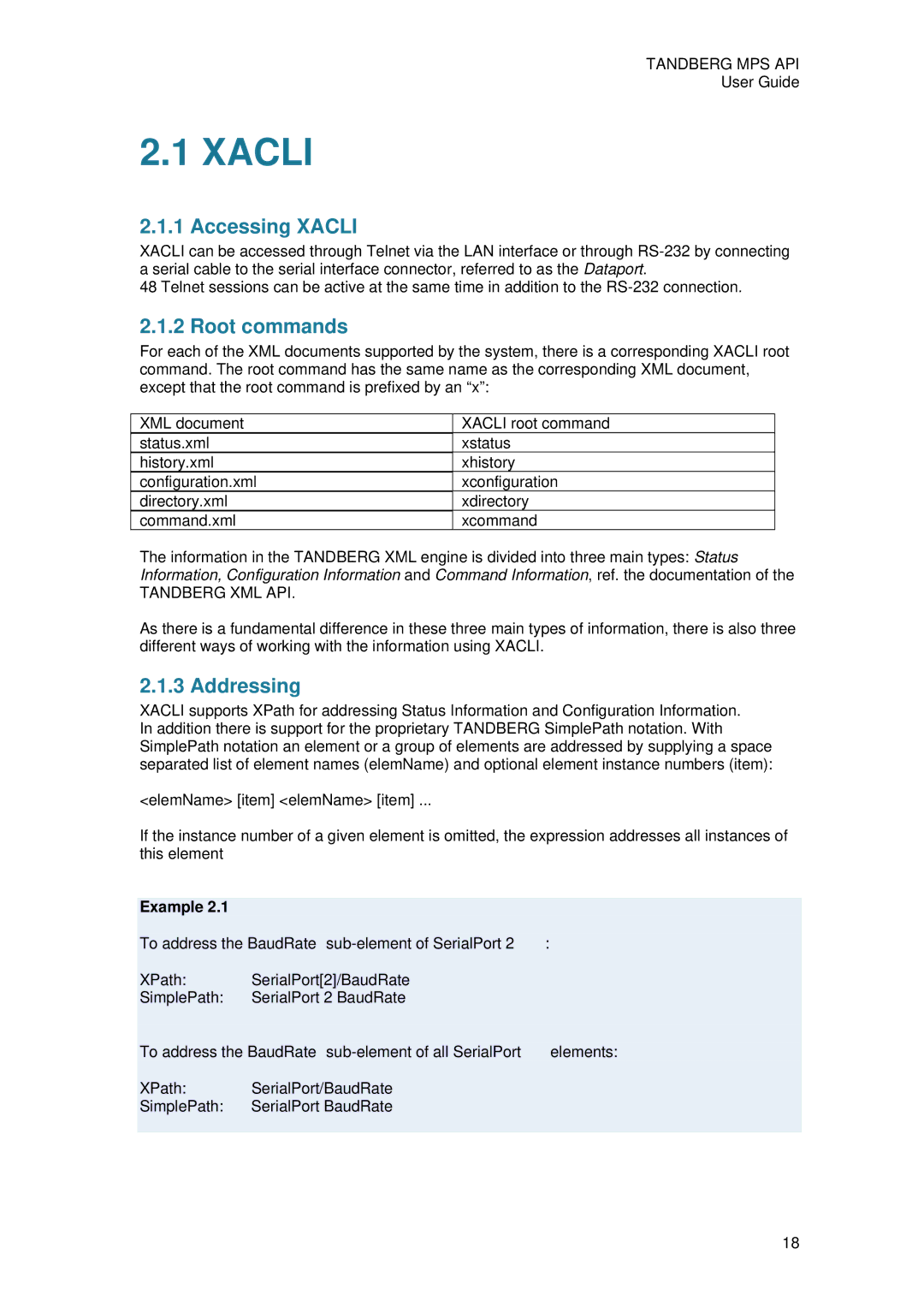
TANDBERG MPS API
User Guide
2.1 XACLI
2.1.1 Accessing XACLI
XACLI can be accessed through Telnet via the LAN interface or through
48 Telnet sessions can be active at the same time in addition to the
2.1.2 Root commands
For each of the XML documents supported by the system, there is a corresponding XACLI root command. The root command has the same name as the corresponding XML document, except that the root command is prefixed by an “x”:
XML document | XACLI root command |
status.xml | xstatus |
history.xml | xhistory |
configuration.xml | xconfiguration |
directory.xml | xdirectory |
command.xml | xcommand |
The information in the TANDBERG XML engine is divided into three main types: Status Information, Configuration Information and Command Information, ref. the documentation of the
TANDBERG XML API.
As there is a fundamental difference in these three main types of information, there is also three different ways of working with the information using XACLI.
2.1.3 Addressing
XACLI supports XPath for addressing Status Information and Configuration Information. In addition there is support for the proprietary TANDBERG SimplePath notation. With SimplePath notation an element or a group of elements are addressed by supplying a space separated list of element names (elemName) and optional element instance numbers (item):
<elemName> [item] <elemName> [item] ...
If the instance number of a given element is omitted, the expression addresses all instances of this element
Example 2.1
To address the BaudRate
XPath: SerialPort[2]/BaudRate
SimplePath: SerialPort 2 BaudRate
To address the BaudRate
XPath: SerialPort/BaudRate
SimplePath: SerialPort BaudRate
18
